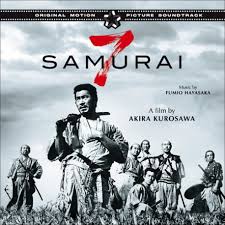Meet Akira Kurosawa(2):Seven Samurai and the Art of the Epic
Few films can claim the level of influence and cinematic mastery as Akira Kurosawa’s Seven Samurai (1954). This epic tale of a group of samurai defending a village from marauding bandits has become one of the most revered films in history. But Seven Samurai is much more than just an action film; it is a meditation on sacrifice, loyalty, and the samurai code of honor.
Kurosawa’s use of ensemble casting, where each character is given distinct personalities and story arcs, was revolutionary for its time. The film’s narrative structure—building tension over its long runtime while never losing focus—became a template for future blockbusters, including its Western remake*, The Magnificent Seven (1960).
What truly sets Seven Samurai apart, though, is Kurosawa’s technical innovation. His use of slow motion in action scenes and multi-camera setups to capture the chaos of battle was groundbreaking. These techniques are now commonplace in modern action cinema, but Kurosawa pioneered them with a sense of precision and purpose that remains unmatched.
*For a deeper dive into Kurosawa’s influence on action cinema, check out Stephen Prince’s The Warrior’s Camera .


